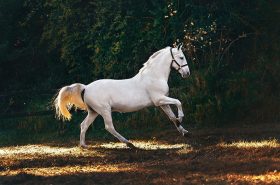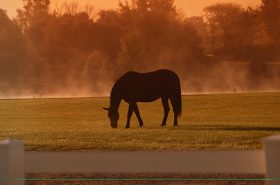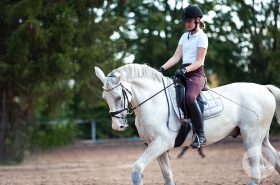Sleep is a crucial part of every animal’s life, and horses are no exception. However, unlike humans who enjoy long stretches of deep sleep, horses have unique sleeping habits that reflect their instincts and natural behaviors. Understanding how horses sleep helps owners and caretakers provide the right environment to support their equine companions’ rest and well-being.
How Do Horses Sleep?
Horses are prey animals, and their sleep patterns have evolved to help them stay alert to potential threats in the wild. Rather than sleeping for long periods, horses have a polyphasic sleep pattern, which means they sleep for short periods throughout the day and night.
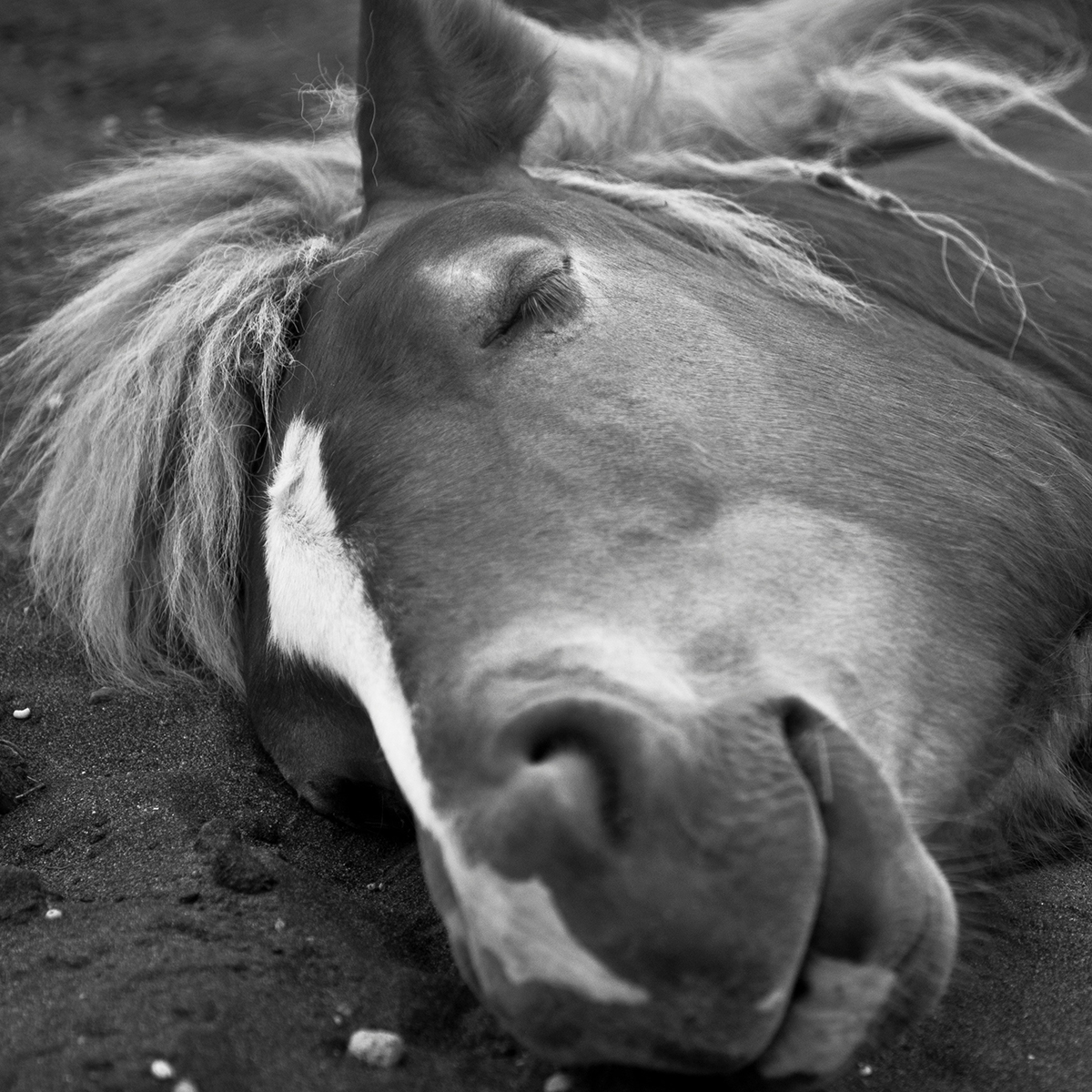 Horses sleep in two main stages:
Horses sleep in two main stages:
- Slow-Wave Sleep (SWS):
This is a lighter sleep phase where horses can remain standing, thanks to a unique locking mechanism in their legs called the stay apparatus. This allows them to rest muscles without collapsing, reducing the risk of predators catching them off guard. - Rapid Eye Movement (REM) Sleep:
REM sleep is the deep, restorative stage that requires complete relaxation. For this, horses need to lie down, as their muscles must be fully relaxed. Horses typically enter REM sleep only when they feel safe and secure in their environment, and they may only lie down for a few minutes at a time.
How Much Sleep Do Horses Need?
On average, horses require:
- 4-7 hours of total rest daily.
- 30 to 60 minutes of REM sleep, usually divided into multiple short sessions.
Foals and young horses need significantly more sleep, often lying down for long periods. Older or injured horses may also lie down more frequently.
Standing vs. Lying Down
Horses’ ability to sleep standing up is a unique adaptation to avoid predators in the wild. However, they must lie down for REM sleep. Without it, they can suffer from sleep deprivation, which can lead to health and behavioral issues such as lethargy, irritability, and even collapse from sudden sleep attacks.
That’s why it’s essential to ensure your horse has a comfortable and safe place to lie down. Bedding, adequate stall size, and a secure environment are all key factors in encouraging horses to relax enough to achieve REM sleep.
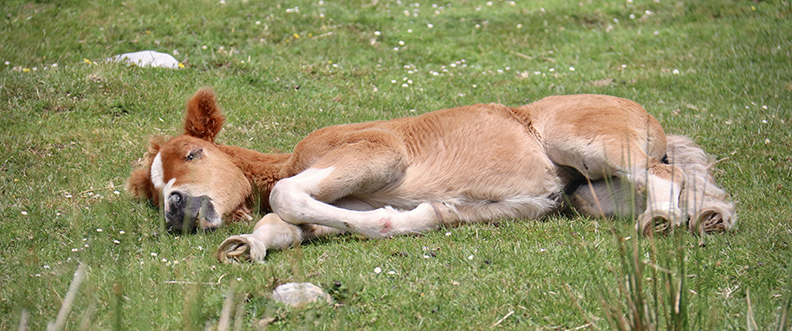
Common Concerns with Equine Sleep
- Sleep Deprivation: If a horse doesn’t feel safe lying down (due to poor footing, a too-small stall, or social stress), they may skip REM sleep. Signs include excessive drowsiness, reluctance to lie down, and even sudden collapse while standing.
- Sleep Patterns and Herd Dynamics: Horses may take turns lying down if they’re in a group, with one horse standing guard while the others rest. This reflects their natural instincts for survival.
- Environmental Factors: Loud noises, changes in routine, and unfamiliar surroundings can disrupt a horse’s sleep. Providing a quiet, consistent, and secure environment helps horses get the rest they need.
Horses’ sleep patterns are fascinating and uniquely adapted to their natural instincts. By understanding how horses sleep, and the importance of both standing and lying-down rest, owners can create an environment where their horses feel secure and can achieve the essential deep sleep they need for optimal health. So next time you see your horse catching a nap in the field or snoozing in the stall, remember—they’re doing exactly what nature intended!

